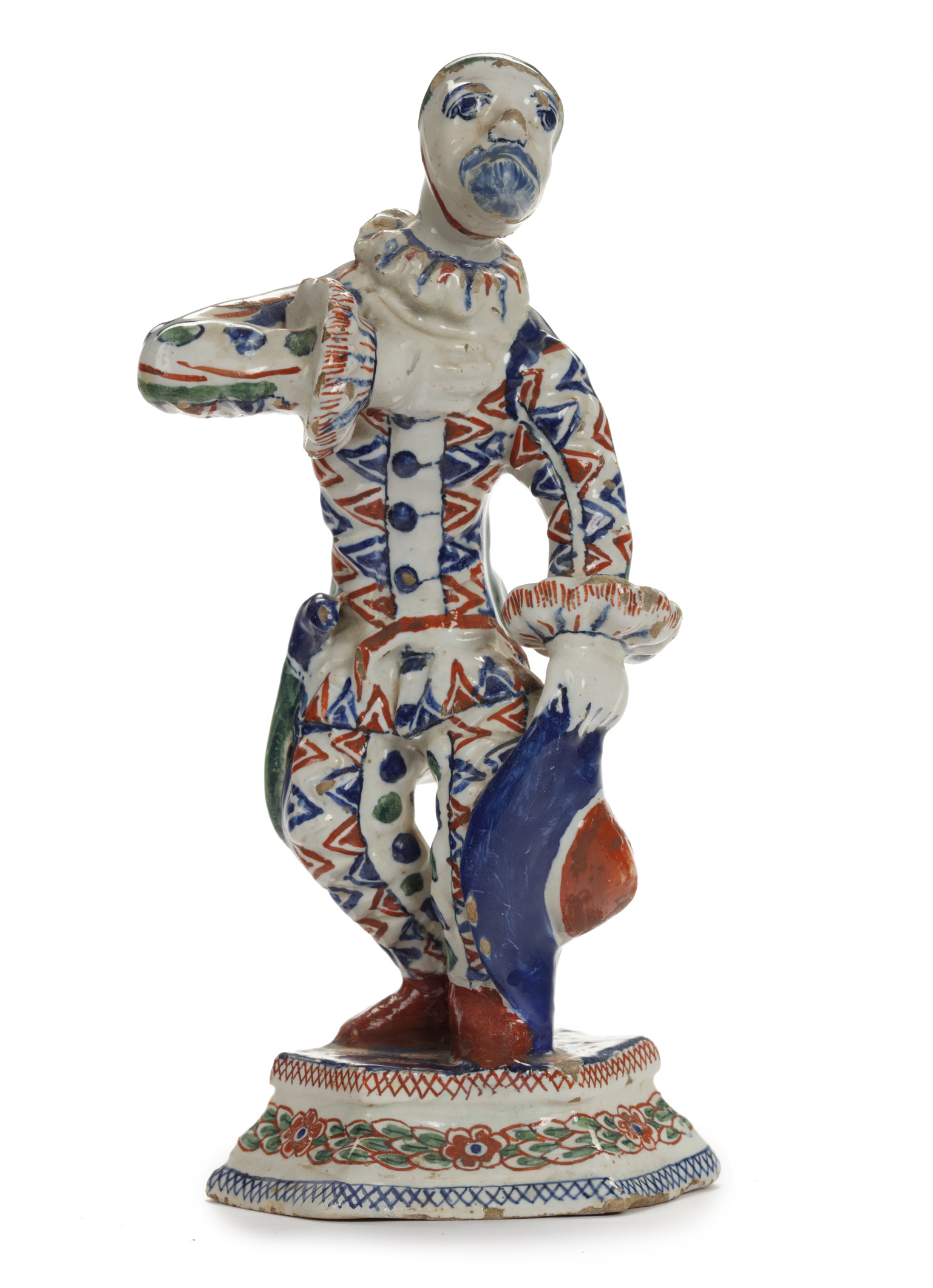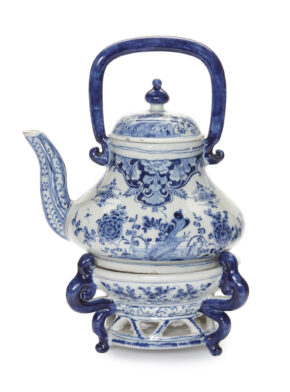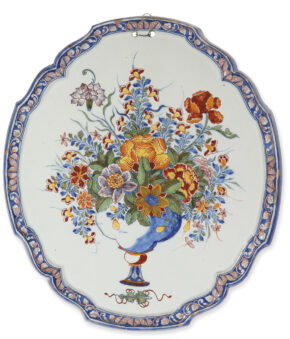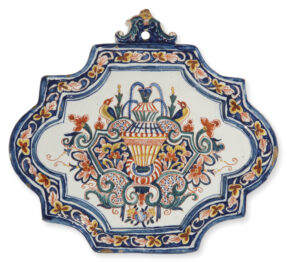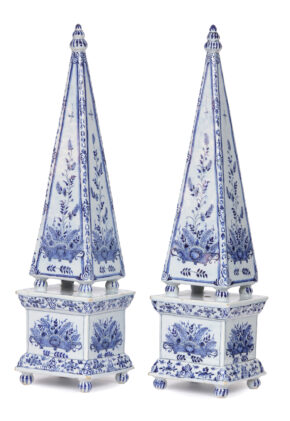![]()
Images on this website are licensed under a
Creative Commons Attribution-NoDerivs 3.0 Unported License.
OBJECT
•D2317. Polychrome Commedia dell’Arte Figure of a Harlequin
Delft, circa 1710
Marked and numbered LVE 4 in blue for Lambertus van Eenhoorn, the owner of De Metaale Pot (The Metal Pot) factory from 1691 until 1721, or his widow Margaretha Teckmann until 1724
The standing male figure of Harlequin in a slightly contorted pose, with his left hand
holding his blue and iron-red hat, while his right hand is over his heart, beneath his ruff collar, wearing a cap attached by an iron-red chin strap and wearing a distinctive costume with molded iron- red, green and blue triangles and blue buttons, standing on a hexagonal base, its blue ground top reversed with red scroll motifs and its sides with a band of green leaves and ripon-red flowerheads.
DIMENSIONS
Height: 21.8 cm (8.6 in.)
PROVENANCE
Dutch Private Collection, Amsterdam and hence by family descent
PROVENANCE+
The complete provenance of this entry has been registered by notarial deed with independent and secure registration agency Provenance+ Amsterdam.
NOTE
The Commedia dell’Arte (Italian Comedy) has been a source of inspiration for painters, printmakers and porcelain manufacturers throughout Europe for centuries. The Commedia dell’Arte was a form of comedy theater characterized by masked types which began in Italy in the sixteenth century, possibly as a reaction to the political and economic crises of that century. It was a form of theater in which professional players improvised on a fixed theme. The characters were recognizable by their mask and costume. There was a range of characters, from a jester, merchant, to the female servant Colombine and the brave Capitano. Since the Italian players traveled throughout Europe, the names of the least known actors occasionally changed from region to region.
In response to the rising popularity of the Commedia dell’Arte in Italy, France, Germany and the Netherlands in the first half of the eighteenth century, the potters in the city of Delft produced objects, such as plates and figures, with the Commedia dell’Arte characters. The present figure showing Harlequin is the best known of the comic servant characters. The Harlequin is characterized by his checkered costume. His role is that of a light-hearted, nimble, and astute servant, often acting to thwart the plans of his master, and pursuing his own love interest, Columbina, with wit and resourcefulness, often competing with the sterner and melancholic Pierrot. Harlequin later develops into a prototype of the romantic hero. Harlequin inherits his physical agility and his trickster qualities, as well as his name, from a mischievous “devil” character in medieval passion plays.
Harlequin figures were also produced in Meissen porcelain. The modeling of the Delftware figures, which is less refined than that of the Meissen figures, shows that the Dutch figures predate those from Meissen. They could therefore have sparked the idea to make a series of figures at Meissen. Since the Dutch figures predate those made at Meissen, they are probably among the earliest surviving ceramic sculptures representing the Commedia dell’ Arte.
SIMILAR EXAMPLES
A similarly modeled figure of Harlequin is in the Ephis Collection, in the Museum of Fine Arts, Boston (inv. no. 2012.592.1). A red stoneware figure of a Harlequin, probably produced by De Metaale Pot (The Metal Pot) factory is in the Gardiner Museum, Ontario (inv. no. G97.8.1). A blue and white figure of a Harlequin, possibly marked for Lambertus van Eenhoorn, was auctioned at Frederik Muller & Cie in December 1928, lot 117.
CORRECTION
This figure had previously erroneously been assigned the provenance of “Antiekbeurs Delft, Nijstad Antiquairs, August 1961 (according to family archive)” and exhibition history “Meesterwerken uit Delft in Stedelijk Museum Het Prinsenhof, Delft, 1962 and described and illustrated in the exh. catalogue, cat. no. 205”.
We have rectified this with the owner and we regret having made this mistake, due to a misattribution of another description to this figure.

